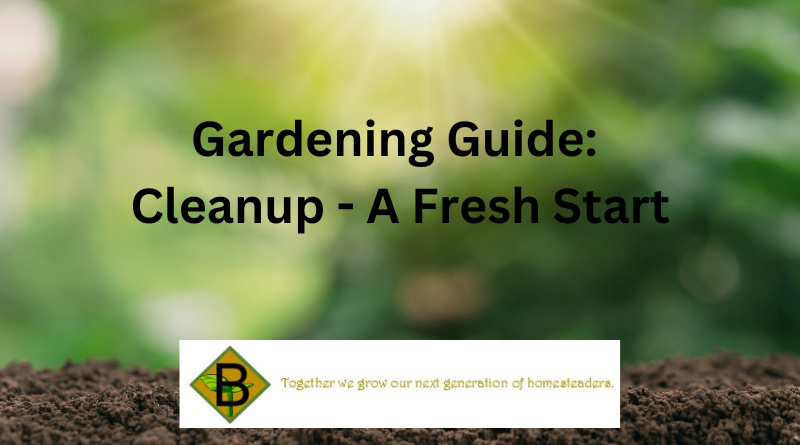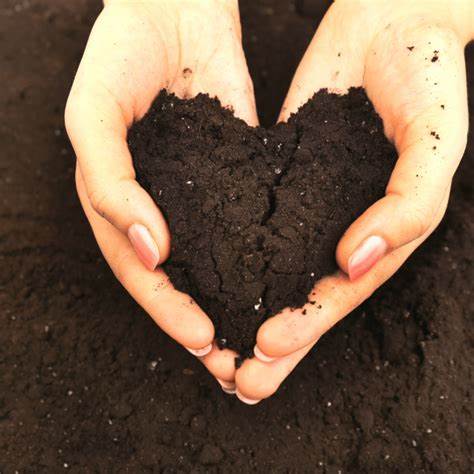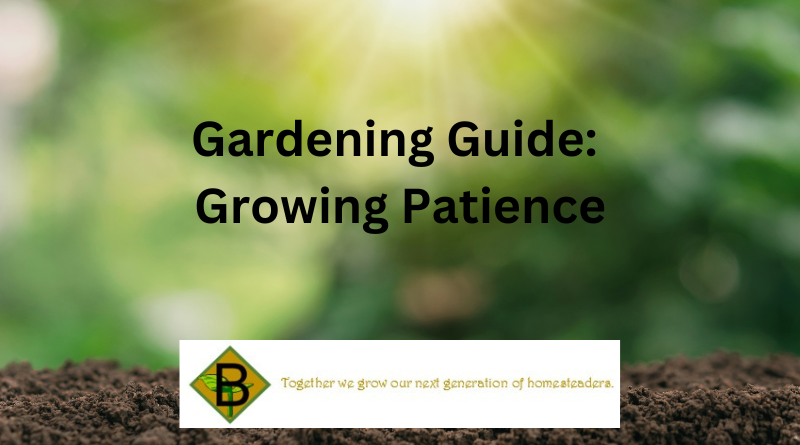Gardening Guide: Cleanup – A Fresh Start

As this year’s multiple-personality “winter” weather has us itching to do ALL the Spring things, including gardening, we invited our friends at DiamondB to help us do some thinking and planning. You know…BEFORE we go spending our life’s savings at the plant nurseries. (But they are ALL so pretty!)

Garden Cleanup: A Fresh Start for Next Season
As the days grow shorter and the cool weather sets in, it’s time to give your garden a little TLC in preparation for next season. A good garden cleanup tidies the space and sets the stage for healthy, thriving plants in the coming months. Don’t worry—this doesn’t mean you must roll up your sleeves and dive into hours of backbreaking work. Let’s break it down step-by-step!
- Removing Dead Plant Matter
First, you’ll want to clear out any spent plants. Those dead tomato vines, wilted squash leaves, and droopy flowers? Time to say goodbye. But before you toss them, think about this: Dead plant material is a goldmine for your compost bin—unless it’s diseased. If your plants have any signs of disease (think wilting, yellowing, or mold), it’s best to toss them in the trash to prevent the spread of pathogens. Otherwise, shred the plant matter and add it to your compost pile to break it down into rich, nutritious soil for next year. - Let the Chickens Roam
If you’re lucky enough to have chickens, the end of the growing season is the perfect time to let them do their thing in the garden. Chickens love to scratch and peck, helping to remove pests like aphids, weeds, and even leftover bugs in the soil. Plus, their natural manure is an excellent, nutrient-packed addition to your garden. Just be sure to supervise them, as chickens may get a little too enthusiastic and trample delicate perennial plants.

- Amend the Soil for Next Year
As you clean up, think about what your soil needs. Throughout the season, plants pull nutrients from the soil, so it’s important to replenish them. Adding organic matter like compost will improve the soil structure, but you might also want to consider adjusting your soil’s pH.- To lower the pH (make the soil more acidic), add a little bit of sulfur, which works gradually over time.
- To raise the pH (make the soil more alkaline), Mix coffee grounds or wood ashes from your fireplace. Both will help sweeten the soil naturally. Just make sure to test your soil first, so you know exactly what it needs. Many garden centers offer simple pH testing kits.
- Cover Crops: The Nitrogen Fixers
One of the easiest ways to improve your soil over winter is by planting a cover crop. These are plants explicitly grown to enrich the soil. Clover is an excellent choice because it’s a nitrogen fixer, meaning it naturally adds nitrogen back into the soil—super important for healthy plant growth in the spring. If you don’t plant a cover crop, don’t fret! There’s another option. - Mulch to the Rescue
If cover crops aren’t in your plans, keep your garden protected with mulch. Mulching helps retain moisture, prevents weeds, and stabilizes soil temperature. If you’ve got a stash of mulch, that’s great! But if not, look no further than the yard for some free options:- Dead leaves: Fall leaves are perfect for mulching. Just chop them up a bit with a mower to speed up decomposition, and lay them thick over your garden beds.
- Straw: This is another great mulch material, especially if you have access to bales from your local farm store. Just ensure it’s straw, not hay, to avoid introducing unwanted weed seeds. Mulch will keep your garden beds neat and help suppress those pesky weeds until you’re ready to plant again.

- Get Ready to Plant in the Spring
With your garden cleaned, soil amended, and mulch in place, you’re setting up for a successful gardening season. As winter progresses, take the opportunity to dream about next year’s garden, maybe even sketch out a plan for new crops or layouts. When the time comes, your garden will be ready and waiting for your next planting adventure.
And remember, gardening is about more than just the end product—it’s about enjoying the process. So take your time, have fun, and let the garden do the work for you (with a little help from your chickens, of course). Happy gardening!
Now that your garden is all spruced up, sit back, relax, and start thinking about what you’ll plant come spring. With the right prep, you’ll be ahead of the game—and that’s a pretty good feeling!
Guest post by DiamondB. Visit DiamondB and join their mailing list here.
Want to learn more from DiamondB about gardening?
Click below to read Growing Patience – How planning your garden can save you money, time, and heartache.




